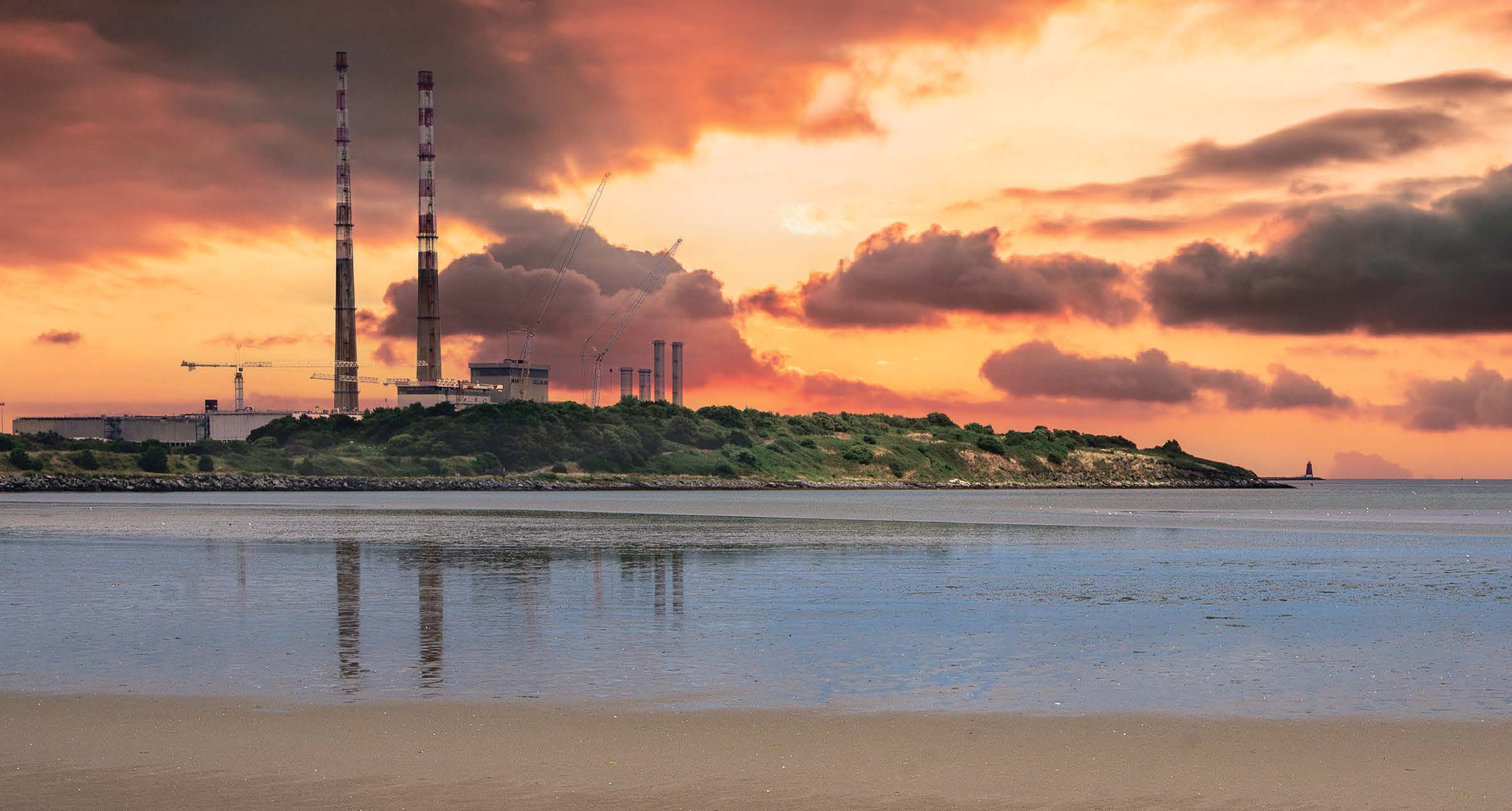What does the future hold for the Poolbeg Chimneys?
When is a crumbling heap of defunct technological infrastructure from the last century not a crumbling heap of defunct technological infrastructure?

For some the answer might be when it’s an iconic Dublin landmark which can be viewed as visual shorthand for the capital city itself. That is how many Dubliners feel about the twin chimneys guarding the entrance to the port on the site of the ESB power station at Poolbeg.
But what is the provenance of these 70s behemoths? What is the nature of the general attachment on the part of the citizenry to the buildings? And what might the cost be of loyal adherence to their preservation?
The Pigeon House
The chimneys are often referred to colloquially as the Pigeon House, the name of the original generation station that first generated electricity in July 1903.
That station itself took its name from the caretakers lodge built to provide refreshments for workers building the Great South Wall, a project which took decades to complete and started in 1761. John Pidgeon was the first caretaker appointed there. “Pidgeon’s House” became a popular dining destination for workers, travellers and the population in general. A hotel called the Pigeon House Hotel was opened there in the late 18th century as the South Wall neared completion, but the area was converted into a military fortification, with the hotel becoming officer accommodation after the 1798 rebellion. The first power generation station was then built there after Dublin Corporation bought the fort in 1897. A sewage processing facility was also built on the site by the Corporation.
The original oil-fired Pigeon House station had a capacity of 3MW, rising to 90MW through redevelopment. Originally run by the Dublin Corporation Lighting Committee, it was acquired in
1929 by the ESB. The facility generated most of Dublin’s electricity until the 1950s.
1970s: Poolbeg Station
The chimneys which created a startlingly high point in Dublin’s low rise skyline are associated with the development of the new Poolbeg station in the 1970s. The first two sets of generators there were originally oil-fired and were commissioned, along with the first chimney in 1971. The second chimney was commissioned in 1978 with the addition of a third boiler. All three were converted incrementally to use gas rather than oil, a process completed in the mid 1980s.
Decommissioning and Controversy
In 2000 the ESB upgraded Poolbeg to use modern combined gas technology (CCGT).
By 2010, the three original units at Poolbeg with which the chimneys are associated were retired, depriving the chimneys of practical function and leaving us with only their controversial form. However from the time that the ESB announced its intention to close the power station back in 2007 there has been a tussle over their fate.
Councillors voted at that time to add the chimneys to the Record of Protected Structures (RPS), but in 2008 the conservation department of DCC decided that the stacks did not have sufficient architectural, social or historical value to be listed. Some six years later in 2014, with the demolition of the chimneys
threatened by the ESB, Cllr Dermot Lacey successfully brought an emergency motion calling again on the council to add the chimneys to the RPS, citing their value as landmarks and part of Dublin’s industrial heritage as reasons for their preservation. There was even a suggestion at the time by Dun Laoghaire designer Michael O’Mara that the chimney stacks could be transformed into an iconic city landmark by wrapping them in spiral ramps and building a “sky bridge” between the two towers.
Since then the matter seems to be stuck in stasis, with the ESB agreeing to continue maintaining the buildings for the time being, but no real progress on their functional or cosmetic development. Steel caps were placed on the chimneys in 2015 in order to slow the deterioration of the building.
The ESB gave a written commitment to the ongoing maintenance of the structure for a 10-year period in 2017, but in 2021 suggested that radical measures such as encasing them in concrete or fibreglass, at least partially, might be needed to ensure their survival. The impact of such measures, which would alter the appearance of the buildings, caused concern to many, including councillors. However, others were dismayed at the cost associated with the maintenance of the chimneys.
Letters to The Irish Times at the time contained several such dissenting voices. One writer suggested that a more economical solution to the problem would be to “bring in a demolition crew [to] wipe this hideous eyesore from existence,” while another questioned the use of resources in maintaining the buildings at a time when investment should be made in the development of renewable power generation, saying that “finances allocated to the production of clean electricity come well ahead of exorbitant and wasteful costs in maintaining a city ‘monument’.”
Do We Value The Towers?
With Dublin Port’s current controversial 3FM development plan for the area surrounding the chimneys
(currently running afoul of serious opposition from such disparate sources as SAMRA, the Sandymount residents association, and the Minister for Energy, Eamon Ryan himself), perhaps the issue of what to do about the chimneys will come back into focus.
Will we decide that the cost of maintaining a functionless “eyesore” is futile and wasteful in the context of the urgent need for infrastructural investment across the board? Or can a reasonable price be put on the cultural worth of a building seen by many as iconic, that has become a motif for Dublin city and a welcome home sign viewed through the aircraft window on the approach to Dublin airport? And if so, what is a reasonable price and who will pay for it?



